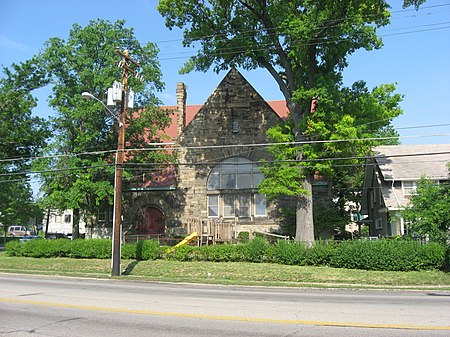First Unitarian Church (Cincinnati, Ohio)
1830 establishments in Ohio19th-century Unitarian Universalist church buildingsChurches completed in 1889Churches in CincinnatiNational Register of Historic Places in Cincinnati ... and 6 more
Religious organizations established in 1830Richardsonian Romanesque architecture in OhioRomanesque Revival church buildings in OhioU.S. Route 42Unitarian Universalist churches in OhioWilliam Howard Taft

First Unitarian Church is a historic congregation of the Unitarian Universalist Association in Cincinnati, Ohio, United States. Founded in the early nineteenth century, it survived a series of division and reunifications in the nineteenth century. Among the people who have worshipped in its historic church building on the city's northern side are many members of the Taft family, including William Howard Taft, the President of the United States.
Excerpt from the Wikipedia article First Unitarian Church (Cincinnati, Ohio) (License: CC BY-SA 3.0, Authors, Images).First Unitarian Church (Cincinnati, Ohio)
Linton Street, Cincinnati Avondale
Geographical coordinates (GPS) Address Phone number Website External links Nearby Places Show on map
Geographical coordinates (GPS)
| Latitude | Longitude |
|---|---|
| N 39.131944444444 ° | E -84.498055555556 ° |
Address
First Unitarian Church
Linton Street 536
45219 Cincinnati, Avondale
Ohio, United States
Open on Google Maps









